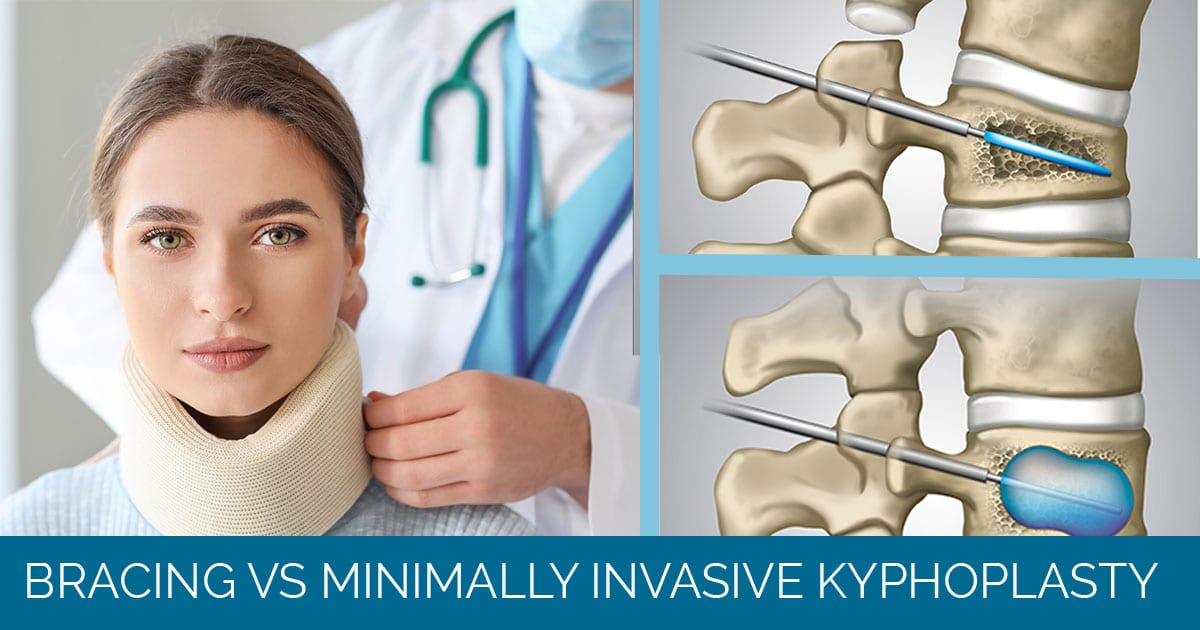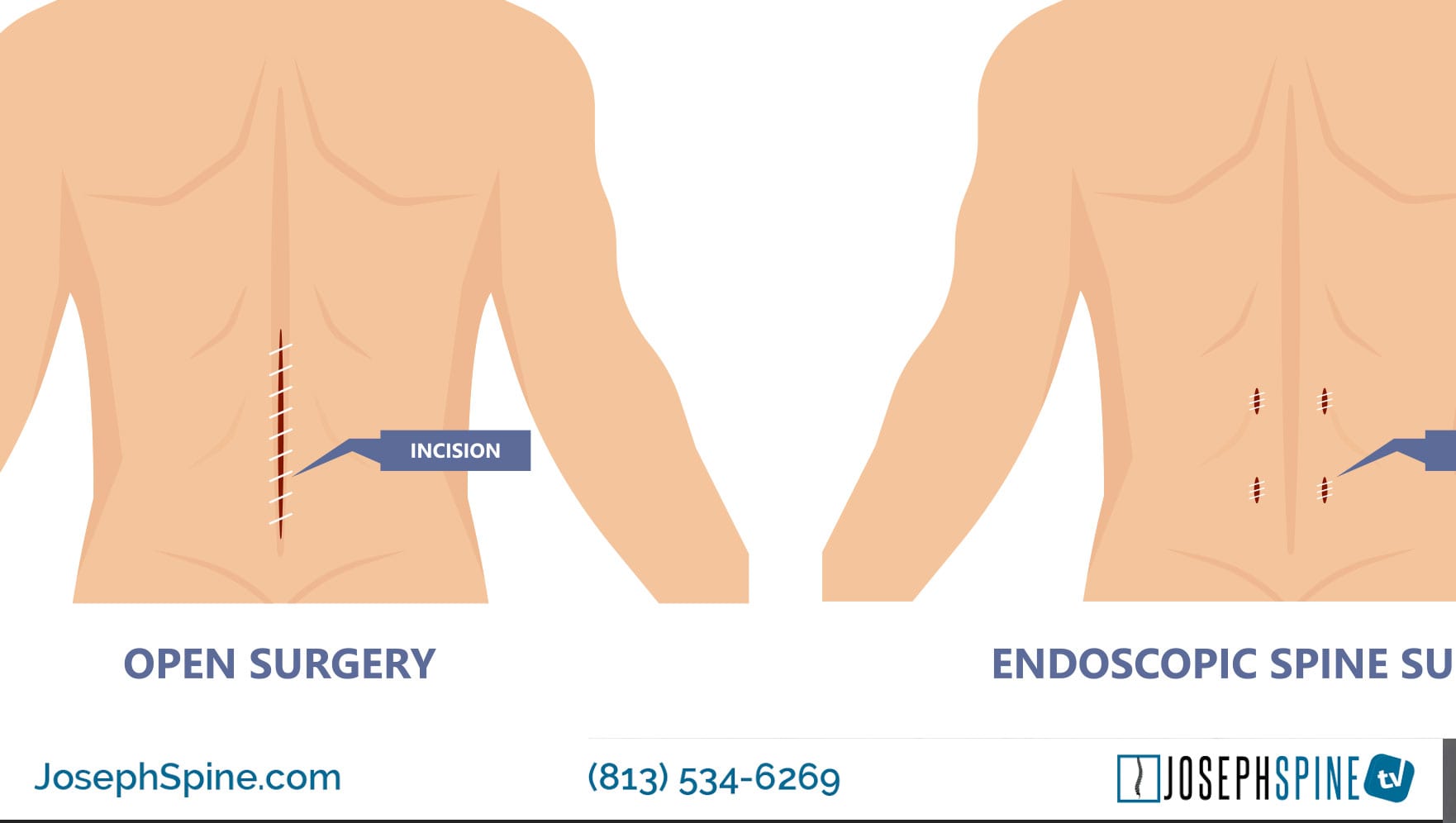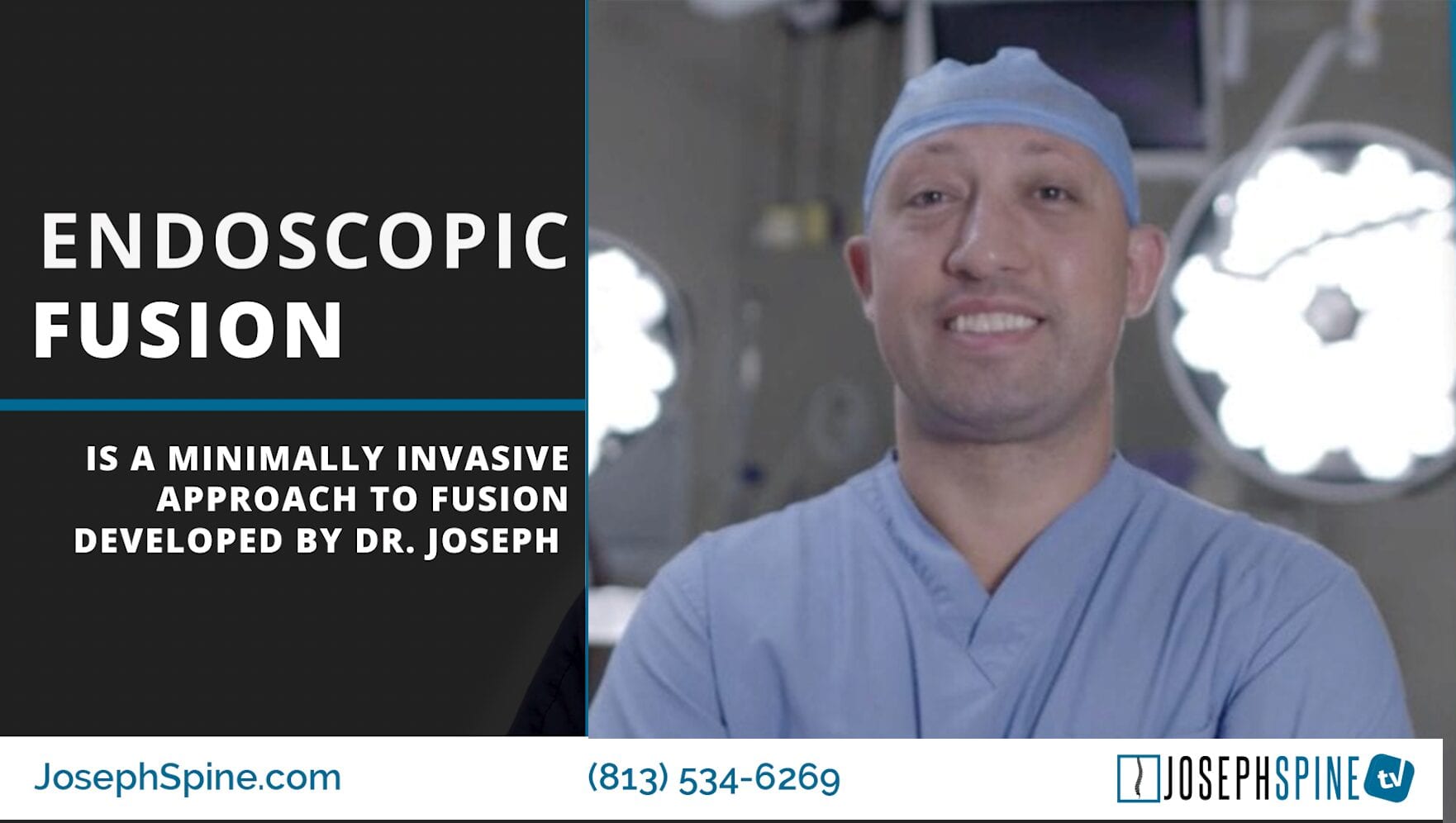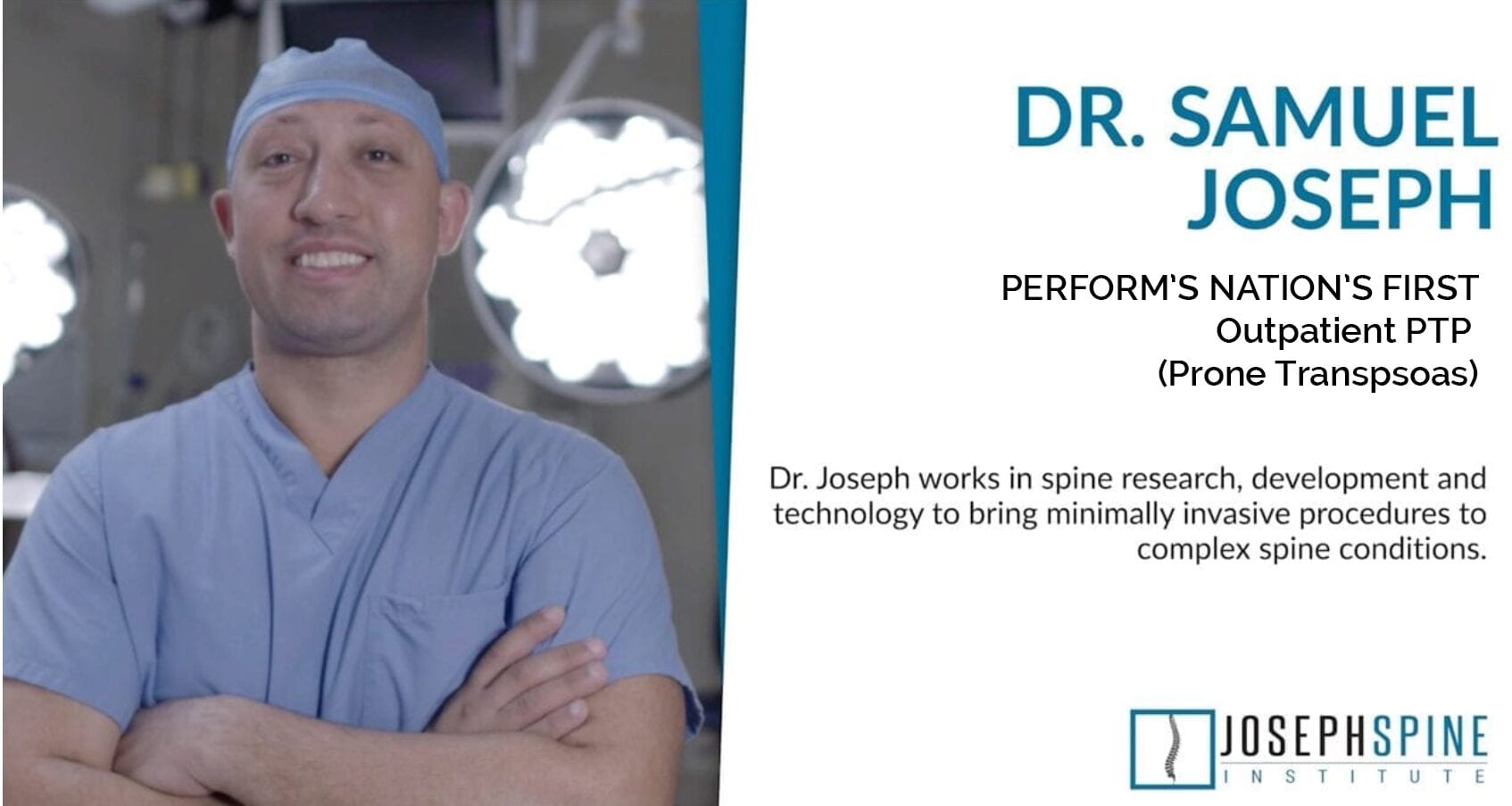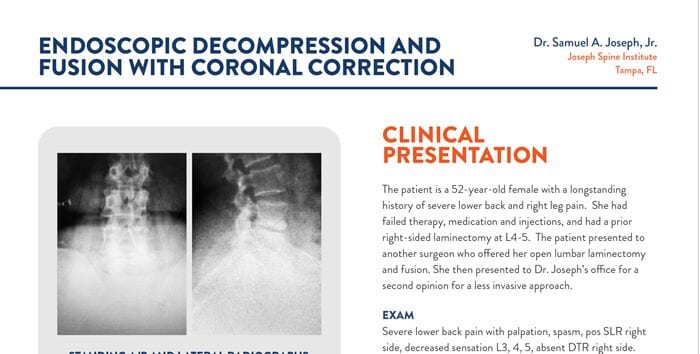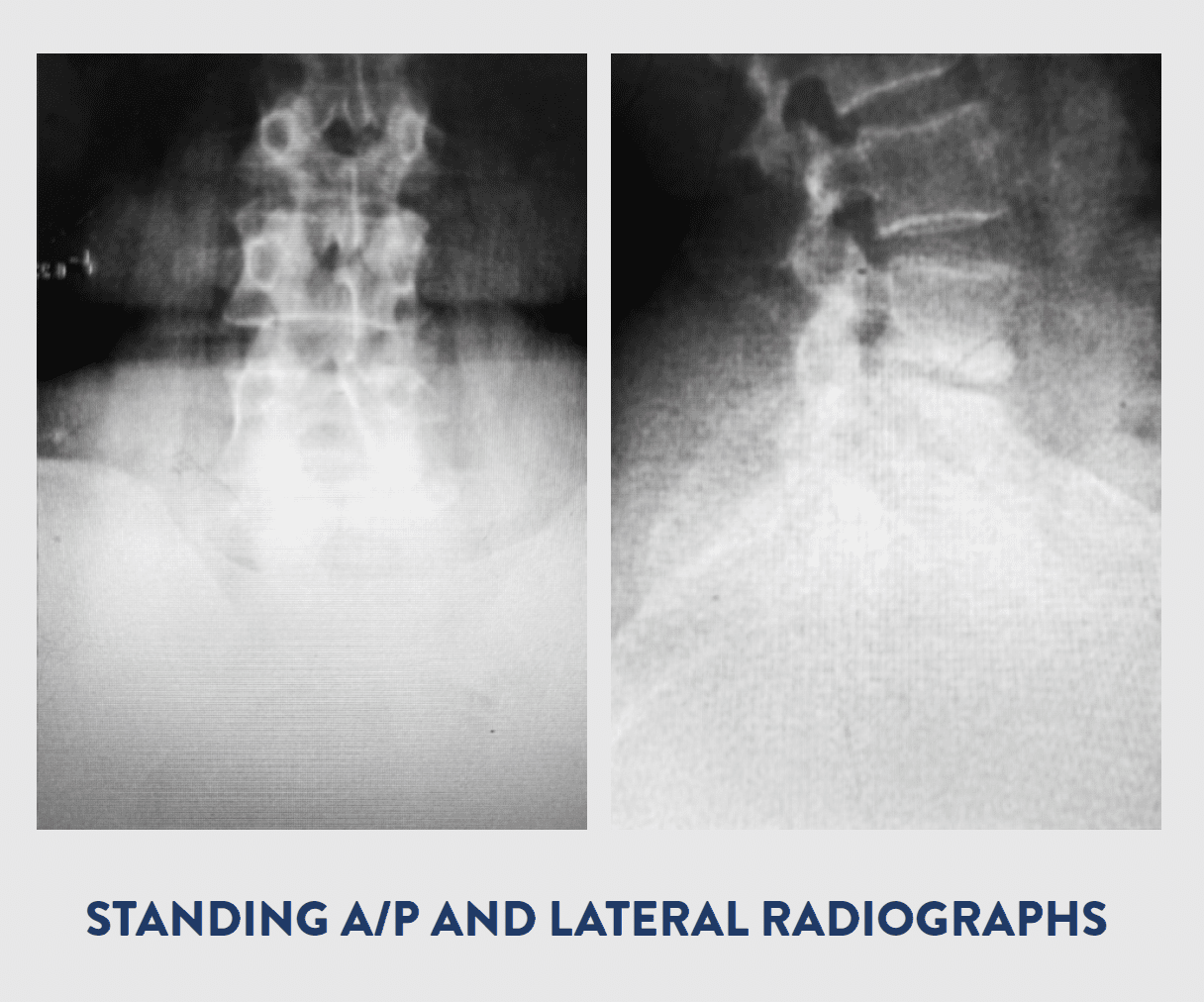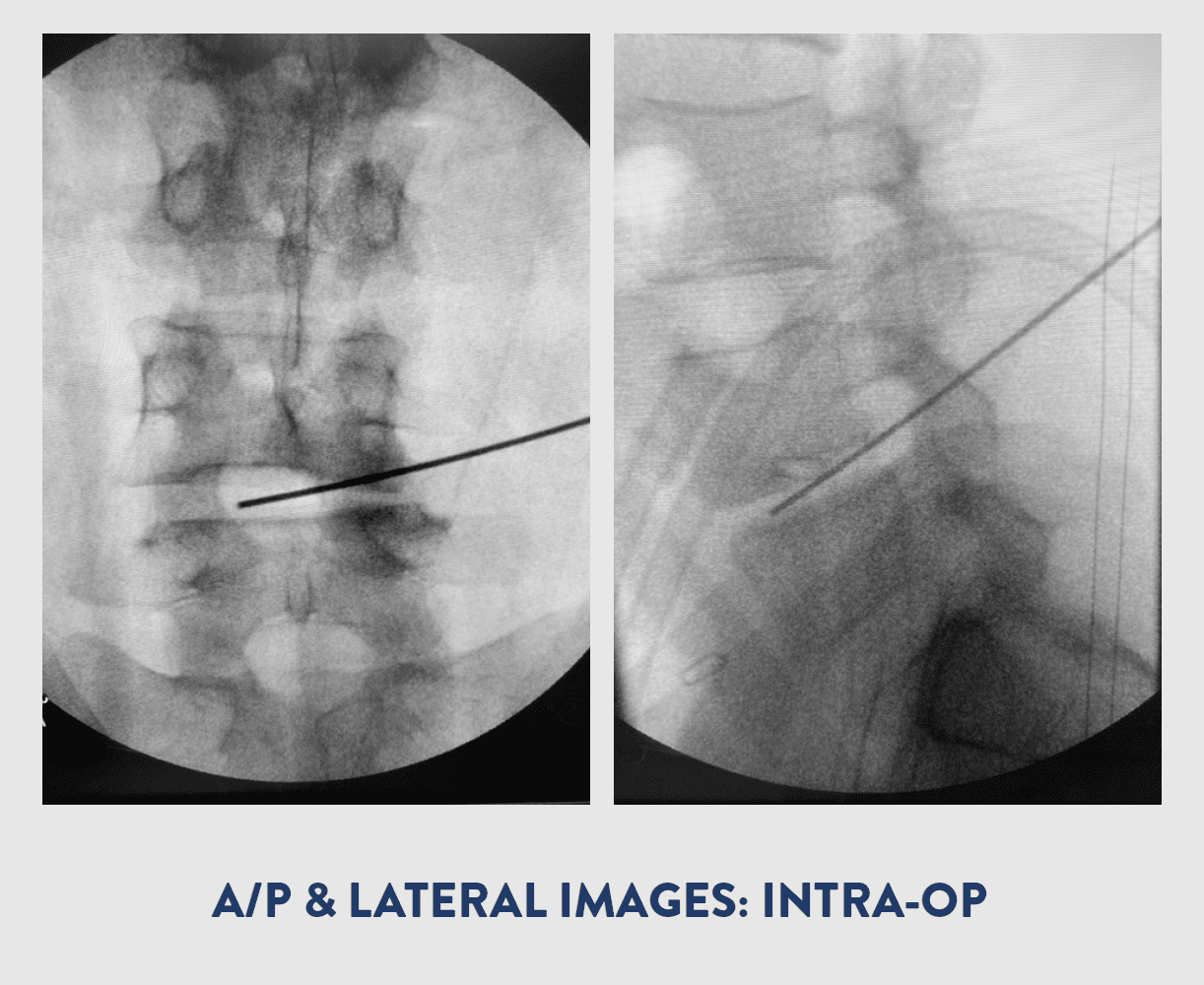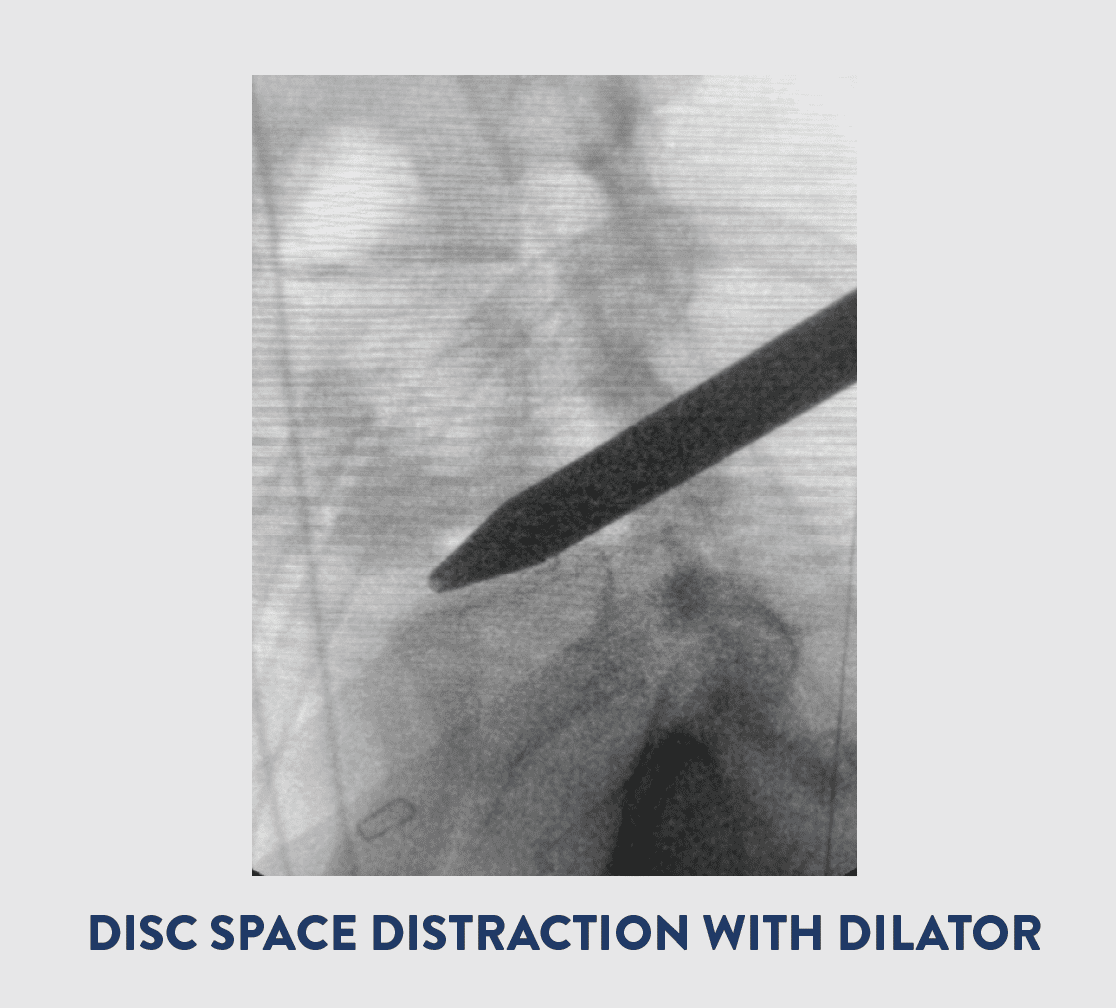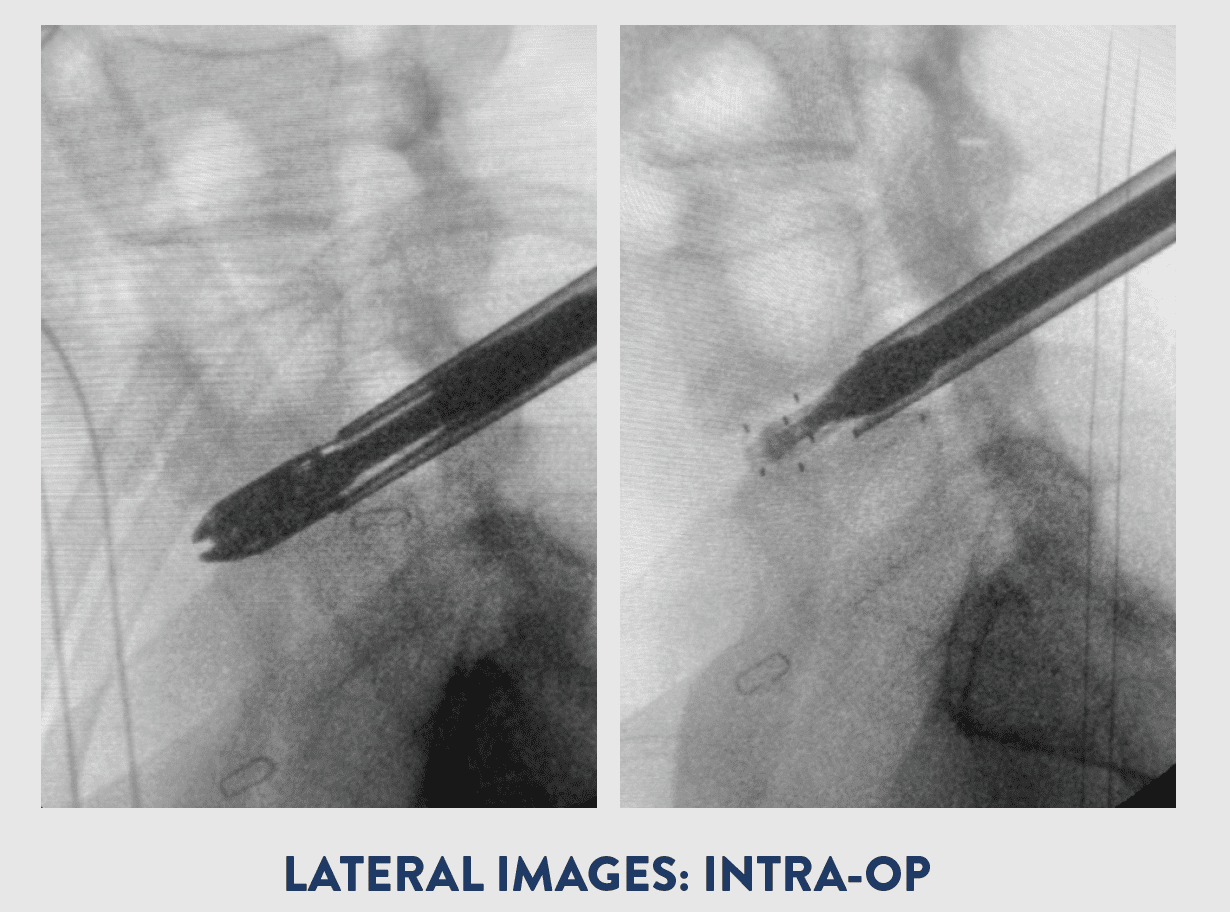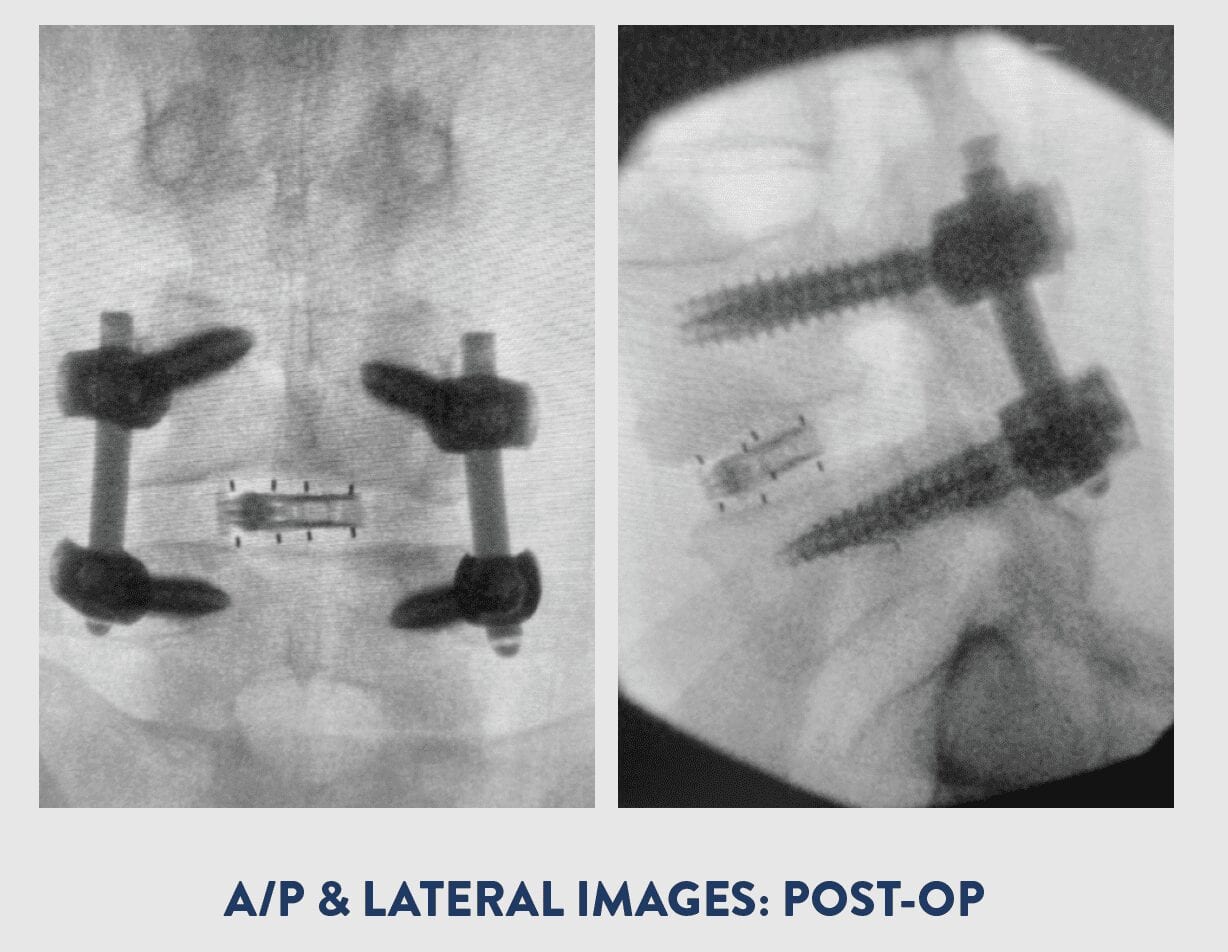Endoscopic Spine Fusion New Minimally Invasive Approach Developed by Dr. Joseph
In this post I will explain an innovative new minimally invasive technique that I have personally developed in an ongoing effort to offer my patients the very best surgical methods available.
This innovative new Transforaminal lumbar endoscopic interbody fusion or an (ETDIF) is a revolutionary minimally invasive spinal fusion technique that combines the precision of the endoscope and a new break through on spinal fusion implant that features an expandable cage.
An endoscopic ETDIF is similar to an open ETDIF surgery, but includes the use of a minimally invasive approach with a tiny camera (the endoscope) that sends images to a monitor. This technique may eliminate the need for anesthesia with less risk and faster recovery.
An endoscopic approach involves tube(s) inserted into the operative area using relatively small incisions, with a camera to provide visibility to the surgeon and small instruments inserted through the tube(s) to conduct the operation.
Confining all instruments to the tube (or sometimes two tubes) is designed to minimize disruption to surrounding tissue and bone, with the goal of less tissue damage and faster healing times.
Preparation for the Endoscopic Spine Procedure
• The patient lies face down to prepare for the procedure. General anesthesia may be used. There is a good possibility that general anesthesia may be avoided in select patients.
• An incision of about one centimeter is made on the most symptomatic side of the spine at the level of the problematic disc.
• Fluoroscopic (live X-ray) visualization is used to identify the appropriate disc.
Preparing the disc space for fusion
• A thin tube is inserted through the incision and into the disc area through the neuroforamen opening, the channel through which the nerves exit the spinal canal. A dilator is used to enlarge the size of the tube and provide a working channel for the operative instruments.
• The endoscope is inserted through the tube into the disc to allow the surgeon to assess the disc.
• The disc area is irrigated with antibiotic solution minimizing the risk of post-operative infection.
• Special instruments are inserted into the tube(s) to remove damaged portion of the disc, and the parts that are cut away are extracted through the tube(s).
• Cartilage covering the surfaces of the bones bordering the disc is removed and extracted through the tube.
• Dilators are then inserted into the disc to restore the disc height and normal spacing between the vertebrae, as necessary.
• This concludes the part of the operation that prepares the disc space for the fusion. The success of the disc preparation is confirmed endoscopically. This part of the process is essential to ensure that bone graft inserted into the disc space is likely to fuse to the bone surfaces bordering the disc.
Inserting Expandable Cage Spinal Implant
• The cage is inserted into the disc space. The cage provides a minimal insertion profile, designed with less neural retraction.
• This expansion allows for maximum graft delivery. The volume is only restricted by amount of disc that is removed.
• Absorbable sutures are used to close the wound and the surgical track is infiltrated with local anesthetic for immediate post-operative pain control. Antibiotic dressing is placed on the wound.
In some cases, screws, reinforced with rods, may be attached to the back of the vertebra to add stability and prevent movement in the area while the bone graft sets. The bone graft fosters bone growth around these rods, and they are typically left in place even after the bone graft takes hold.
The procedure is approximately 1 1/2 to 2 hours and is usually performed as an outpatient surgery.
About Dr. Joseph
Dr. Joseph is a board certified, fellowship-trained, orthopaedic surgeon who specializes in advanced spine care. He is a leader in new spine medicine techniques and procedures. He is dedicated to pioneering minimally invasive, outpatient spine surgical techniques along with complex scoliosis and revision surgery. Dr. Joseph is among a select group of surgeons to offer cutting edge endoscopic and robotic-assisted surgery for patients to provide the most advanced minimally invasive spine surgery (MIS) available globally. He is also the team spine surgeon for the Tampa Bay Buccaneers.
About Joseph Spine Institute
Joseph Spine Institute is the advanced center for spine, scoliosis and minimally invasive spine surgery. Founded by Dr. Samuel A. Joseph, Jr., a fellowship trained, board-certified orthopedic surgeon. Dr. Joseph has assembled a comprehensive team of highly skilled spine specialists that are devoted to offering the highest level of spine care available today. He has also strategically partnered with some of the most innovative leaders in the spine care industry today in order to bring our patients the latest in technology, products and resources.
From state-of-the-art technology, to alternate therapies and interventional pain management treatments our industry leading spine care practice offers our patients a comprehensive, multidisciplinary approach to diagnosis, treatment and rehabilitation of spinal conditions. Our highly-trained surgeons offer an integrated approach to patients that includes surgical and non-surgical options such as pain management and physical therapy.



